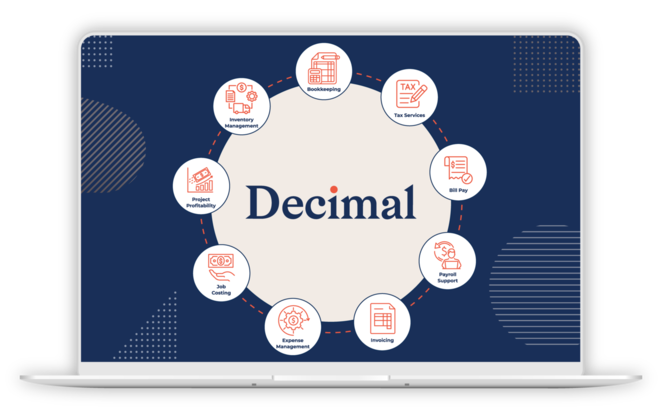Standard Operating Procedures. Just hearing the phrase can make people groan like someone dropped a surprise audit on a Friday afternoon. SOPs have a reputation for being the corporate equivalent of watching paint dry — tedious, rigid, and often filed away, never to be touched again until someone forgets how to onboard a new hire or fix a tech hiccup.
But what if SOPs were not just documentation? What if they became tools of innovation, alignment, and growth? What if you stopped treating them like a compliance checkbox and started using them as a competitive advantage?
When done right, SOPs become a launchpad, not a leash. They create consistency without killing creativity, and they provide clarity without micromanaging. They are not a burden — they are your unfair advantage.
Let us break down exactly how to get there.
Step One: Stop Writing SOPs Like a Robot
SOPs have one job: to help people do things better, faster, and more consistently. If no one can read them, reference them, or stay awake while reviewing them, they are failing at that job.
This means it is time to ditch the outdated “manual-style” writing. You know the kind — third-person, passive voice, long blocks of text, and all the charm of a DMV handbook. Instead:
- Write for the user: Imagine you are explaining it to a new hire on their second cup of coffee and first panic attack.
- Use bullet points, numbered steps, and short paragraphs.
- Incorporate visuals: Screenshots, diagrams, screen recordings, GIFs if your team is into that.
- Hyperlink everything: SOPs are living documents so let them breathe. Link to tools, templates, related SOPs, and resources.
- Add personality: Yes, even internal documentation can reflect your firm’s tone and culture. If your brand voice is warm, helpful, or a little witty, let that shine.
And for the love of clarity, stop embedding procedures in 12-tab Excel files named "final_FINAL_V2." Put it where people can find it, use it, and trust it.
Step Two: Build SOPs with Your Team, Not for Them
The people closest to the work are closest to the truth. So why do so many firms create processes from the top down, then wonder why no one follows them?
Collaborative SOP development is not just more effective, it is more empowering. It invites buy-in, surfaces smarter methods, and strengthens accountability. Here is how to do it:
- Host a working session: Bring in the people who perform the task regularly. Ask them to walk you through their steps while you screen record and take notes.
- Create a first draft, then circulate it: Ask for gaps, gotchas, or better ideas.
- Incorporate feedback and give credit: Let contributors know their expertise is valued.
- Document both the “happy path” and the “what if” scenarios: This adds resiliency and avoids constant pings to the ops team when things go sideways.
Bonus benefit: the act of building SOPs together doubles as internal training. Your team becomes more aware of each other’s roles, dependencies, and tools — which leads to better cross-functional collaboration.
Step Three: Operationalize Creativity
Repeat after me: structure is not the enemy of innovation. In fact, it is the container that allows innovation to thrive sustainably.
SOPs should create a baseline for a known, repeatable way to do things while leaving enough room for iteration and improvement. Here is how to infuse creativity into process work:
- Embed check-in points: At the end of the SOP, ask the user: “Was there a better way?” or “Did you use a workaround not listed here?”
- Schedule quarterly or biannual process reviews: Make them fun. Brand it. Cater it. Invite team leads to bring process improvement ideas.
- Build space for judgment: Not every step needs to be hyper-prescriptive. Teach principles that guide decisions, not just steps to repeat.
- Encourage experimentation: “Here’s the standard. If you try something different, document it. If it works better, we might update the process.”
Creativity does not get crushed by SOPs. It gets captured, refined, and amplified if you build that into the system.
Step Four: Layer Your SOPs with Strategy
Too many SOPs live in a vacuum. They outline what to do but never explain why it matters. Without strategy, processes feel arbitrary. With strategy, they become meaningful.
Here is how to turn SOPs into strategy amplifiers:
- Start every SOP with a purpose statement: “This SOP exists to reduce client onboarding time and improve retention in the first 90 days.”
- Connect the dots: Link the process to a KPI, OKR, or strategic goal. "Completing this step ensures clean data entry, which reduces reporting errors and saves 6+ hours a week on corrections."
- Use outcomes, not just tasks: Instead of “Send the welcome email,” say “Send the welcome email within 24 hours to increase initial engagement and trust.”
- Train on the 'why' as much as the 'how': Your people are more likely to follow processes that they understand — not just in mechanics, but in mission.
You do not need more SOPs — you need smarter ones that align with your goals.
Step Five: Tech It Up Without Overengineering
Technology is your SOP's best friend, but only if you use it right. Too often, teams go all-in on shiny platforms that create more friction than they solve.
Instead, integrate tech where it makes life easier:
- Use tools like Loom or Scribe to add visual walkthroughs.
- Set up automations that trigger SOPs based on status changes or pipeline stages.
- Create digital checklists that live inside your task management tool (like monday.com or ClickUp).
- Turn FAQs into flowcharts or decision trees.
- Track updates with version control so people trust the documentation they are referencing.
But beware of turning your SOP system into a Frankenstein monster. If it takes a scavenger hunt to find what you need, people will default to memory or gut instinct.
The best SOP tech stack is the one your team will actually use.
Step Six: Brand Your SOP Culture
This one is often overlooked, but it is a game changer. Internal processes are a core part of your firm’s culture, so treat them like it.
- Give your SOP library a name: Make it memorable and approachable — “The Way We Work,” “The Playbook,” or “Ops Central.”
- Create icons or visual identifiers for departments or categories.
- Design a SOP cover page template with the title, author, date, and purpose.
- Introduce SOPs in onboarding like a VIP tour: “Here’s your guide to doing great work here.”
- Celebrate process wins: When a new SOP saves time, highlight it in team meetings or internal comms.
- Gamify updates: Run a “Process Refresh Challenge” with prizes for the most impactful revision.
Suddenly, SOPs are not a chore. They are part of how your firm defines excellence — and that makes them cool by association.
Final Word: The Hidden Superpower in Your Firm
Here is the truth: the firms that scale, the ones that adapt quickly and deliver with consistency, are not winging it. They are not relying on tribal knowledge, hallway conversations, or “just figure it out” mindsets.
They are intentional. They are structured. They are built to flex without breaking.
And at the center of all that? Not just SOPs — strategic SOPs. Smartly designed. Co-created. Actively used. Regularly refined. Culturally embraced.
That is how you transform documentation from a dusty drawer into a strategic engine.
So go ahead and give your SOPs the glow-up they deserve. Not just to make work easier today, but to build the kind of firm that wins tomorrow.
.png?width=150&height=63&name=TWRlogo-regmark_blueblack%20(1).png)
.png)










Do you have questions about this article? Email us and let us know > info@woodard.com
Comments: